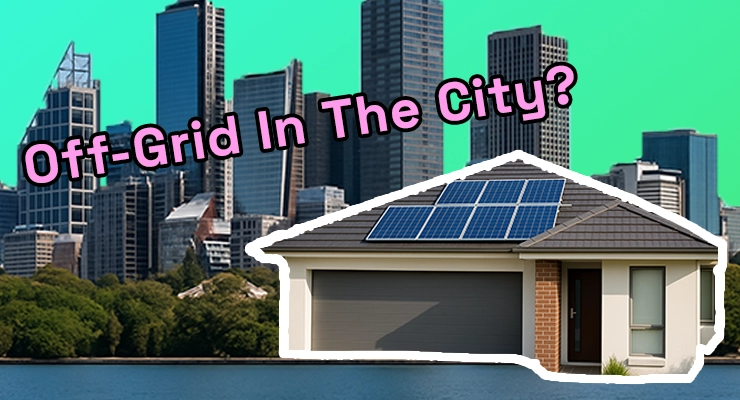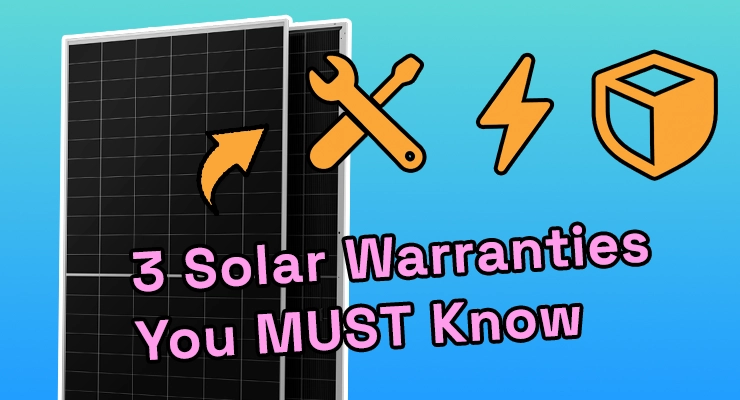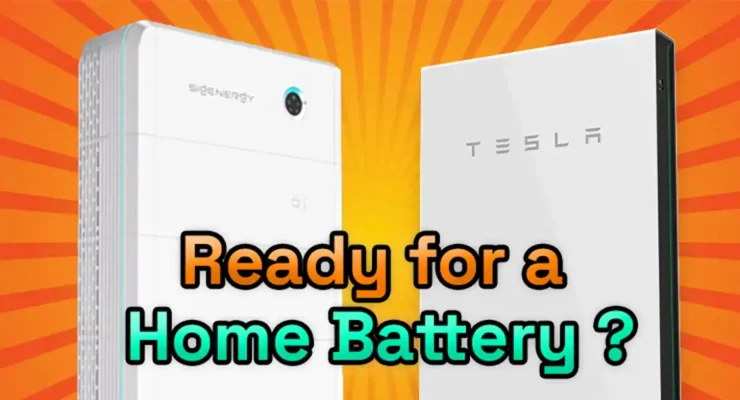
Fast read
The surge in solar systems and batteries has sparked interest in their combined benefits. Over 30% of Australian homes now have solar panels, though most lack batteries. Just five years ago, grid-connected residential batteries were rare, but now, over 10% of new solar installations include them.
Solar-only systems capitalise on daylight-generated electricity, saving costs when not buying power from the grid. Yet, adding batteries allows surplus daytime energy to be stored, boosting self-consumption and minimising grid reliance. While batteries involve an upfront cost, when paired with solar panels, the investment becomes more efficient, potentially offering substantial long-term savings.
Explore emerging options like virtual power plants, sustainable energy, and backup power. To make an informed choice, consider your unique energy needs and consumption patterns.
What are the benefits of investing in a solar battery?
The adoption of batteries in conjunction with solar systems has seen a surge in popularity in recent years. Solar panels have gained significant traction, with over 30% of Australian homes now equipped with them. Interestingly, the majority of these solar installations do not include batteries.
In contrast, just half a decade ago, residential batteries connected to the electricity grid were a rarity. Fast forward to today, and over 10% of new solar installations now incorporate batteries, with this trend showing steady growth.
This leads to a crucial question – what are the advantages and value propositions when comparing a solar-only system to one that combines solar panels with batteries?
Solar only
When a home installs a solar system without a battery, it takes full advantage of the electricity generated during daylight hours. Any electricity produced by the solar panels is used within the home, resulting in cost savings because the household doesn’t need to purchase that kilowatt-hour (kWh) from the grid.
If the solar panels generate more electricity than the house consumes at that moment, the excess energy is sent back to the grid, earning a modest feed-in tariff (FIT) credit. However, during periods when the solar panels produce less electricity than the household requires, such as on cloudy or rainy days and during night time, the home draws electricity from the grid, incurring costs.
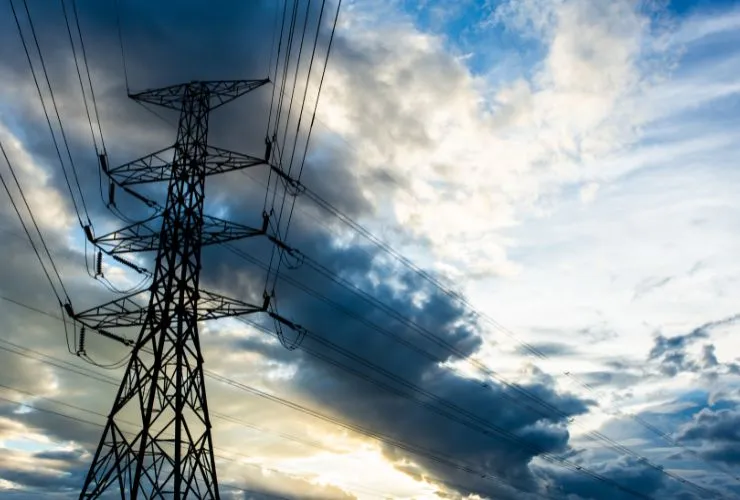
Let’s delve into a couple of practical examples to understand the yearly savings when using an average 8kW solar system. This system size aligns with the typical installations in 2022 and is considered modest for homes with battery storage plans.
For instance, in Sydney, where the system costs $8,500 (net), is north-facing, and has an average daily production of 32 kWh, the household pays 30 cents per kWh for electricity. Simultaneously, they receive a FIT of 7.6 cents per kWh for surplus electricity exported to the grid.
100% self-consumption: 0% exported
The best case scenario for savings would be if all the electricity generated is used in the house (very rare), the household would save;
32kwh generated/ consumed x30c per kWh (not bought) = $9.60 per day
= $3,504 per year
As a simple payback on the $8500 “investment of 2.4 years
0% self-consumption / 100% export
The worst case scenario is that the household uses no electricity and sends it all back to the grid and gets paid the FiT for what is consumed. Based on the assumptions above this would be;
32kwh generated x 7.6c p/kwh exported = $2.432 per day
= $887.68 per year in savings
As a simple payback on the $8500 “investment” of 9.57 years.
However, neither of the above is likely, while every household is different, on average we could assume that a typical working household would self-consume approx. 35% of the solar in the house and export 65% of the resulting savings would be;
Self-consumption: (32kwh * 35%) * 30c p/kwh = $3.36 per day
Exported/ FIT received: (32kwh * 65%) * 7.6c p/kwh = $1.58 per day
Daily Savings = $5.31
Annual Savings = $1,938.15
As a simple payback on the $8500 “investment” of 4.38 years
The return on your solar investment significantly hinges on your ability to optimise electricity usage when it’s generated. Shifting energy-intensive tasks, like running the washing machine, dishwasher, pool pump, or electric water heater, to daytime hours can greatly enhance your solar savings. The more you can adapt to using electricity during daylight, the better your solar investment performs.
It is important to note that the calculations presented here are based on a flat rate tariff in Sydney. Tariffs may vary slightly across different regions, but the fundamental principles and values remain applicable. Moreover, Time of Use (TOU) tariffs, which entail higher costs during peak periods (typically from around 4 pm to 8 pm) and lower rates during off-peak hours, can significantly influence savings. TOU tariffs can amplify the benefits of battery storage, especially when it comes to managing energy costs during peak demand times.
Adding a battery- savings
Integrating a battery into a solar system offers a solution to store the surplus electricity generated during sunny periods, making it available for consumption when solar generation is insufficient. This enhancement allows households to maximise their self-reliance on solar-generated electricity, reducing the dependence on grid power, particularly during nighttime hours.
However, it is important to note that batteries constitute a notable expense when adding them to a solar system. On average, they cost approximately $1,500 per kilowatt-hour (kWh) of usable capacity. This cost may vary depending on factors like brand, quality, and size. For our illustration, we’ll consider Tesla, a widely recognised benchmark in the market.
For instance, the average cost of purchasing and installing a Tesla Powerwall 2 with a usable capacity of 13.5 kWh is around $16,000. In this scenario, where the flat-rate electricity charge is 30 cents per kWh and the FIT for exported electricity is 7.6 cents per kWh, we can explore the potential savings and return on investment.
Savings with full battery use
If we can use 100% of the available battery capacity every day then the savings would be;
13.5kwh x 30c = $4.05 in electricity saved.
However, we could also get 7.6c per kWh if the electricity was exported back to the grid so the real savings are;
13.5kwh x (30c -7.6c) = $3.02
Annual savings = $1102.30
As a simple payback on the $19,000 “investment” of 17.2 years
So when looking at a battery as an additional option from an investment or savings perspective in isolation it does not look like it is great value.
Savings with full battery use
If we can use 100% of the available battery capacity every day then the savings would be;
13.5kwh x 30c = $4.05 in electricity saved.
However, we could also get 7.6c per kWh if the electricity was exported back to the grid so the real savings are;
13.5kwh x (30c -7.6c) = $3.02
Annual savings = $1102.30
As a simple payback on the $16,000 “investment” of 14.52. years
So when looking at a battery as an additional option from an investment or savings perspective in isolation it does not look like it is great value.
Blended solar and battery
Opting for solar panels and batteries as a combined investment presents a compelling approach. When you purchase and install both components as a comprehensive solution, you can achieve cost savings due to reduced labour expenses and increased installation efficiencies.
For example, instead of incurring the separate costs of $8,500 for solar panels and $16,000 for a Tesla Powerwall 2, which totals $24,500, you might realise some savings, potentially around $1,000. This could bring the combined cost down to $23,500, making the overall package more cost-effective and efficient. This approach not only streamlines the installation process but can also enhance the financial viability of your solar and battery investment.
If we combine the savings of the Solar and battery calculations above.
Savings from self-consumption of the Solar during the day;
Self-consumption: (32kwh * 35%) 11.2kwh * 30c p/kwh = $3.36 per day
Full battery usage 13.5kwh * 30c p/kwh saved = $4.05 per day
Exporting remaining 5.8kwh 8 7.6c p/kwh FIT = $0.44 per day
Average Daily Savings = $7.85
Average Annual Savings = $2,865.25
This gives a simple payback on the $23,500 system of 8.2 years.
This as a combined package is more viable. With warranties on most products being 10 years and up to 25 years, you can expect many years of savings after this payback period.
It is also worth considering the further opportunities for savings and benefits of batteries now and in the future which we discuss below.
Virtual power plants (VPPs)
Virtual Power Plants (VPPs) have emerged as a fascinating option. These are being offered by various energy retailers and providers. A VPP operates by allowing a company to take control of your battery, using it to sell electricity in the energy market, particularly during high-demand periods. By aggregating the capabilities of numerous batteries, they can harness this combined energy to capitalise on peak pricing, compensating you with a premium for your contribution.
Different types of VPPs have entered the market. Some energy retailers offer to install a solar and battery system for free, maintaining control for a few years before you gain full access to the battery. Alternatively, there are third-party VPPs where you purchase and install your battery, then sign up with them to oversee its use, earning a monthly fee or credit each time they tap into your battery’s power.
While there is potential for VPPs to generate additional income and bolster the payoff of your battery investment, it’s advisable to approach them with caution. The long-term earning potential, battery utilisation, and potential impact on battery lifespan or warranties remain unclear. VPP operators might seek to use your battery precisely when you need it, making it essential to weigh the potential earnings against your energy requirements.
Sustainability and self-sufficiency
Sustainability and self-sufficiency drive many individuals to install batteries alongside their solar systems. This approach allows homes to elevate their self-reliance on solar-generated electricity, reducing the need to export solar energy to the grid and purchase it back during nighttime hours.
The addition of a battery can boost a household’s ability to harness a large portion of their solar power, ranging from 30% to as high as 80-90%, contingent on factors like consumption patterns and battery size. In some cases, homeowners even oversize their solar and batteries to achieve energy independence while staying connected to the grid.
Blackout protection
Moreover, batteries can offer blackout protection or backup power. This is particularly valuable in regions prone to blackouts or where they are becoming more common. As the grid evolves toward renewable energy sources, there’s growing concern that it might not adapt swiftly enough, potentially leading to an increased risk of blackouts. In such circumstances, having a battery system can provide peace of mind by ensuring key appliances continue to function during power outages.
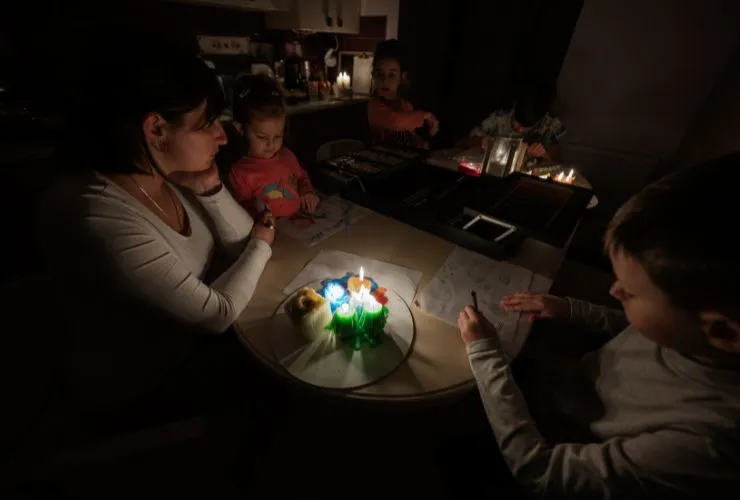 Avoid relying on candles for light during a blackout with backup battery power
Avoid relying on candles for light during a blackout with backup battery power
Two crucial considerations for batteries are start-up or surge power and change over time. When appliances are initially turned on, they require 5 to 7 times more power than during regular operation. Therefore, the battery needs to handle this surge in current.
Additionally, the time it takes for the battery to take over when the grid fails can vary. Some batteries offer instant changeover, ensuring an easy transition, while others might have a slight delay, up to 30 seconds or more, and faster changeover generally comes at a higher cost. These factors play a pivotal role in determining the battery’s effectiveness during outages and its suitability for your specific needs.
For more detailed guidance on batteries, consider reading Tips for Buying a Home Solar Storage Battery.

